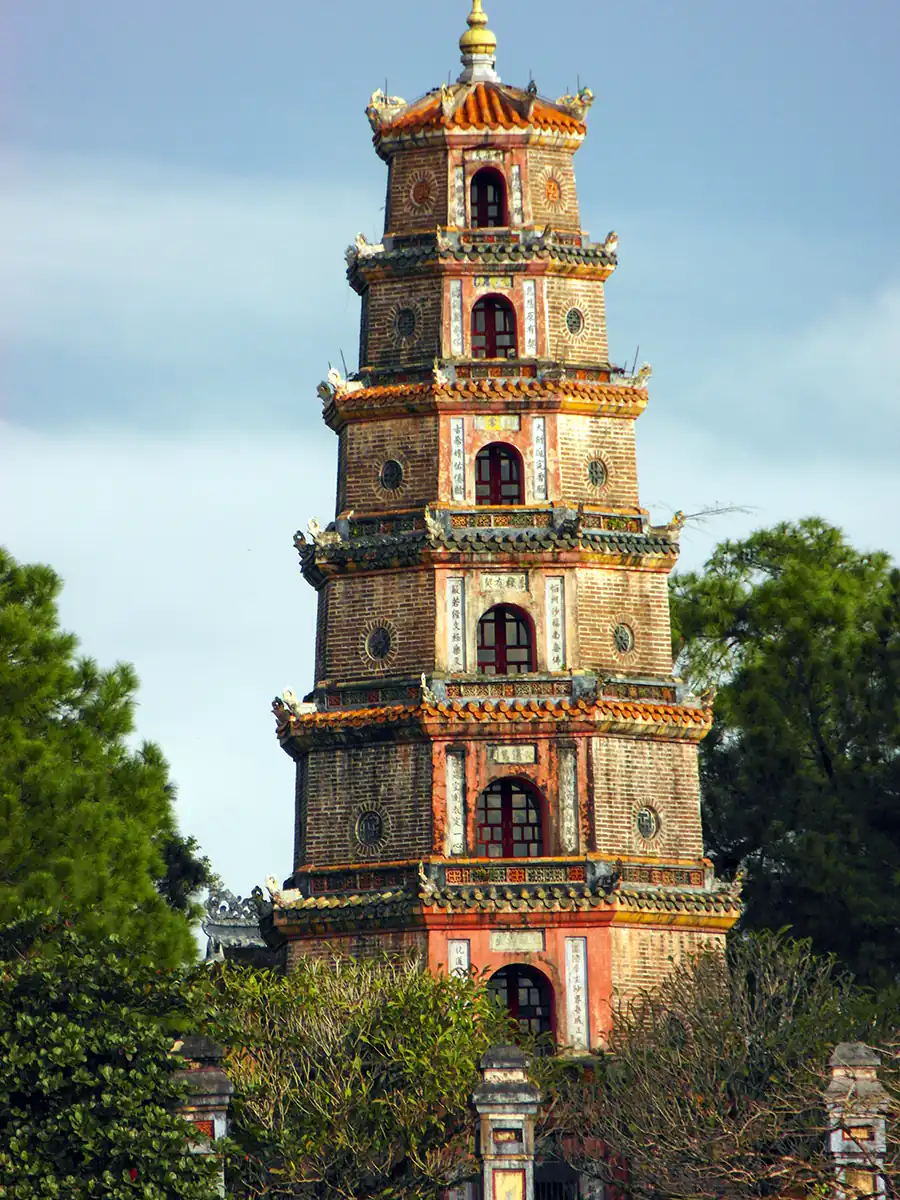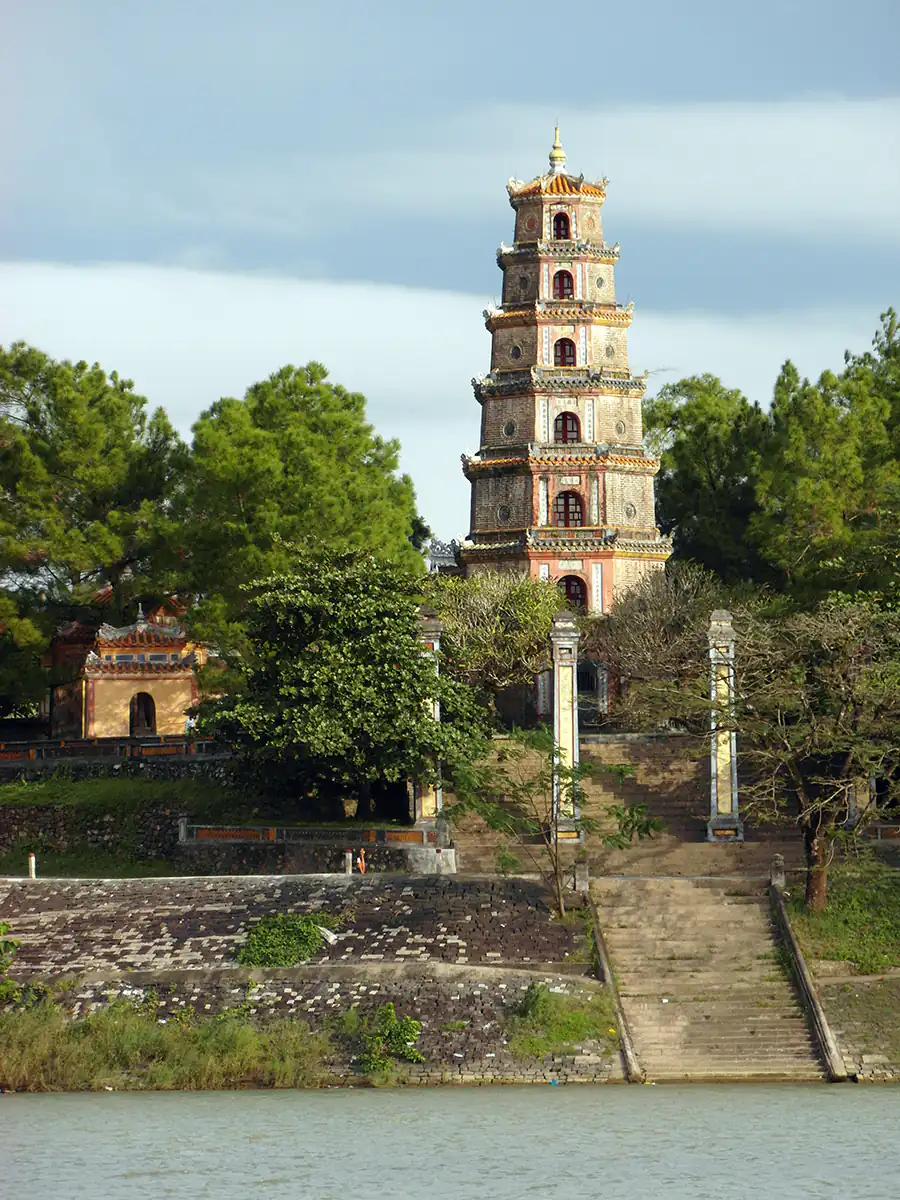Thien Mu Pagoda, Hue
Situated on the north bank of the Perfume River in the village of Huong Long, five kilometers from the city of Hue, Thien Mu Pagoda is one of Vietnam's most beautiful and well-preserved religious sites.
The name of the pagoda comes from a legend. Long ago, an old woman known as Thien Mu (literally "Heavenly Lady") appeared on the hill where the pagoda now stands. She told the local people that a King would someday come and build a Buddhist temple for the country's prosperity. In 1601, on hearing this legend, King Nguyen Hoang began construction of the pagoda. Further constructions and renovations were done during the succeeding centuries. Emperor Thieu Tri built the Phuoc Dien Tower at the entrance to the complex in 1864 (some sources say 1844). The tower has seven levels, is 21 meters tall and is the tallest such structure in Vietnam.
To the tower's west is a pavilion housing a giant bronze bell called Dai Hong Chung. The bell was cast in 1710 by Nguyen Phuc Chu, weighs 3285 kilograms (7242 pounds), and is audible from 10 kilometers away. The main sanctuary, Dai Hung Shrine, is divided into two segments - the front hall is separated from the main sanctuary by several folding wooden doors. The sanctuary hall enshrines three statues of the Buddha (which symbolize past, present, and future lives), as well as several other important relics. The Thien Mu Pagoda's residents - the Buddhist monks who worship in the shrine and maintain it, also occupy the Dai Hung Shrine.

Martin Gray is a cultural anthropologist, writer and photographer specializing in the study of pilgrimage traditions and sacred sites around the world. During a 40 year period he has visited more than 2000 pilgrimage places in 160 countries. The World Pilgrimage Guide at sacredsites.com is the most comprehensive source of information on this subject.



